This is a free fortnightly newsletter about the New Zealand Net, which meets daily at 2100 NZT on 7030 kHz.
If you would like to be notified by email when a new edition is published, please subscribe here.
Browse our Newsletter Archive and List of Net Tips.
Featured key
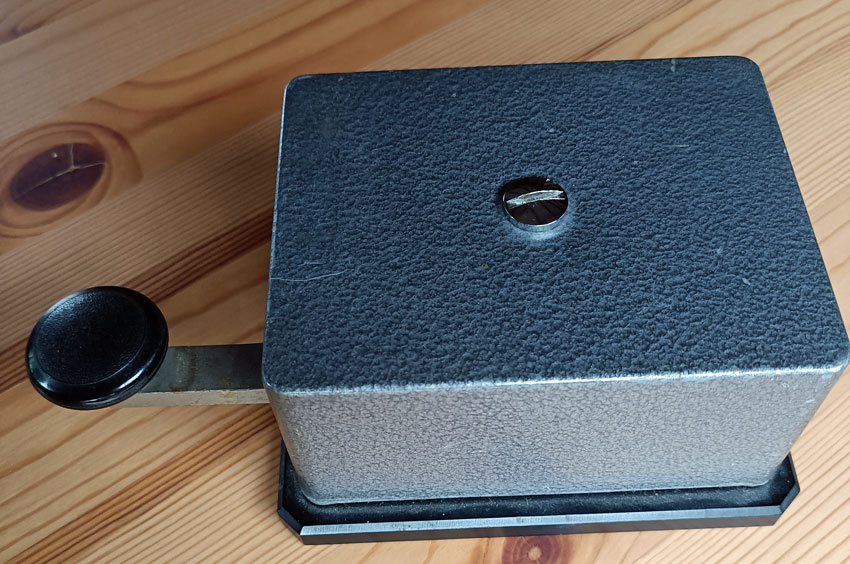
Photos: ZL2WT
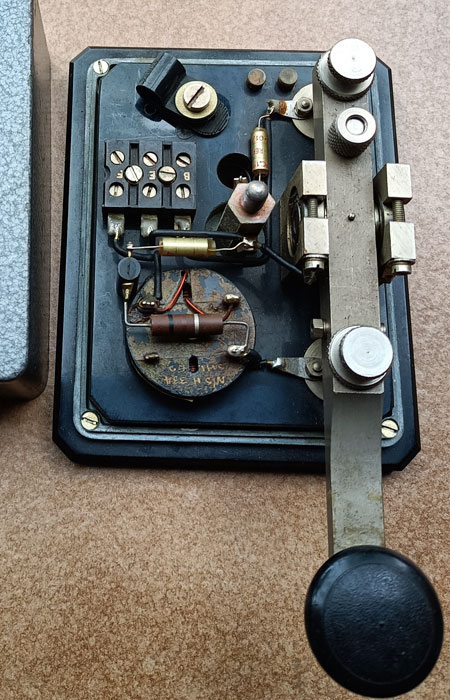 By David ZL2WT
By David ZL2WT
Ebay was once the place to view keys. Twenty-one years ago I saw this key, listed as a “GCHQ Apprentice Key”. My bid was successful and the key arrived shortly afterwards.
I asked the seller about the history of the key. He told me that that the key once belonged to a man who worked at GCHQ (the UK’s intelligence, security and cyber agency). The only thing I knew of GCHQ is that in the 1960s they regularly advertised for radio operators in Wireless World magazine.
The key appears to be identical to the Marconi International Marine Company’s 365EZ key, except that the base is shorter (not extending under the knob) and there are no badges or engraved plates.
It is a lovely key to use – I wonder what might have been the contents of any secret messages that it has sent?
* If you have an interesting key for this feature, please send a nice clear photo and a few words describing it.
Quick notes
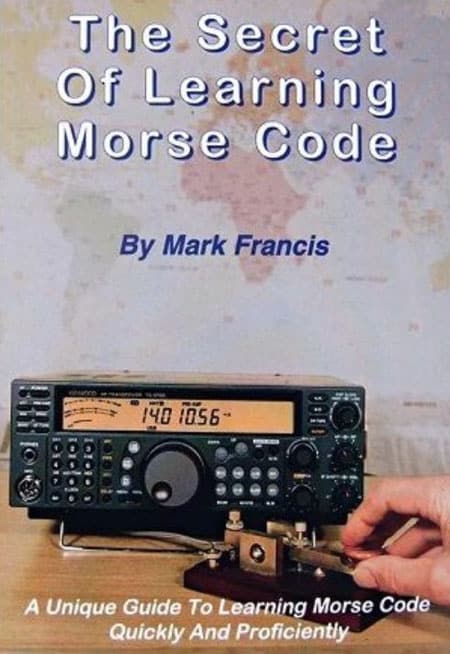 I was looking at Trade Me (New Zealand’s online auction site) and was surprised to see that a well-known radio parts dealer in Christchurch was advertising a book about Morse Code. Maybe this is just the start of something? I’m hoping for a selection of Supreme straight keys and bugs to come soon. 🙂
I was looking at Trade Me (New Zealand’s online auction site) and was surprised to see that a well-known radio parts dealer in Christchurch was advertising a book about Morse Code. Maybe this is just the start of something? I’m hoping for a selection of Supreme straight keys and bugs to come soon. 🙂
NZ Net now on 40 metres. For the past two weeks, we have been running the net on 7030 kHz instead of our traditional 3535 kHz and the results have been very encouraging. For most people, there is less noise and better propagation. Local signals seem just as strong as on 80 metres, and the trans-Tasman circuit is working well. So, we’ll be staying on 7030 until further notice, probably until the end of daylight saving time next April at least.
This weekend is the CQ WW CW contest, one of the bigger contests of the year. It is possible that the net will need to QSY due to high activity on 40 metres, so please tune UP if you cannot hear the net on 7030.
Zerobeating reminder. Several net controllers have asked me to remind all operators of the need to zero-beat the net. This will be especially helpful in high QRM situations where NCS may be on an irregular frequency and using a narrow filter. We had an occasion this week where the net control did not hear two stations checking in, purely because they were outside his filter bandwidth. Perhaps these ops didn’t realise their RIT was on. If you hear NCS tell you QNL or QNH please take heed and check your zerobeating.
Photo flashback
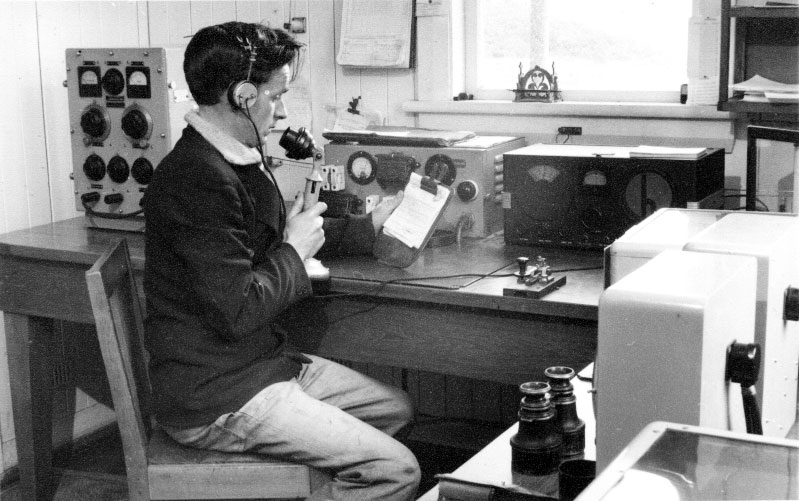
Photo courtesy Chris Underwood
A light keeper seen operating radio equipment at the very remote Puysegur Point lighthouse in Southland (actually within Fiordland National Park). The photo was taken in 1940 or later, based on the presence of a Hallicrafters S-22R Skyrider Marine receiver (seen behind the telegraph key) which was first produced in 1940.
See more at maritimeradio.org
Straight Key Night, Sunday 1 December
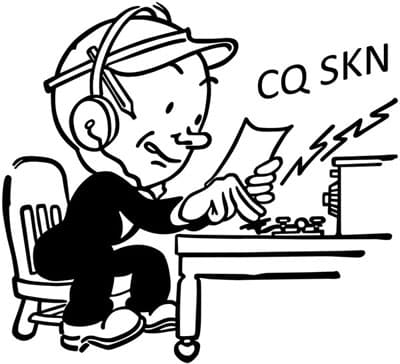 New Zealand Straight Key Night (Summer Edition) will be held on Sunday 1 Dec from 9pm to 10pm NZDT (0800 to 0900 UTC) on 80 metres.
New Zealand Straight Key Night (Summer Edition) will be held on Sunday 1 Dec from 9pm to 10pm NZDT (0800 to 0900 UTC) on 80 metres.
SKN honours the original amateur radio mode in an easy-going style. Operators send signal report, name, location, type of key, type of transmitter and power output. Stations are limited to 100W output power.
SKN is not a contest – but the operator who gets the most votes for the quality of their sending will win the Bruce Scahill Best Fist Award. This certificate honours Bruce ZL1BWG (SK), who was a dedicated supporter of SKN. Please email your nomination to ZL1NZ within one week following the event.
SKN uses the QSY Rule. Any station that calls CQ must QSY after making a contact.
Full details about SKN are available at zl1.nz/skn or you can contact ZL1NZ.
SKN is open to all straight key operators, regardless of skill level or speed.
SAQ marks centennial of Alexanderson alternator
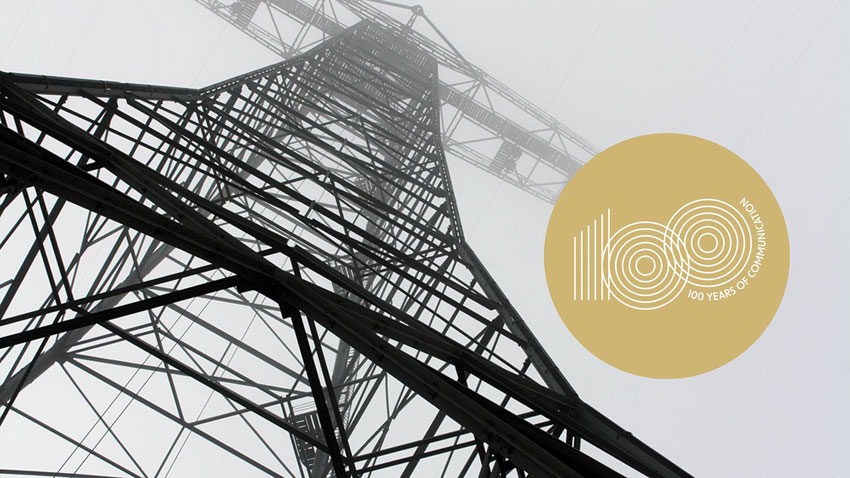
On 1 December 1924, a VLF transmitter with callsign SAQ at Grimeton Radio Station in Sweden was put into commercial operation, establishing communication with New York.
On December 1st 2024, one hundred years later, SAQ will commemorate this event. The unique Alexanderson alternator from 1924, with the callsign SAQ, is scheduled for one transmission on 17.2 kHz CW.
Program & transmission schedule:
10:00 CET (09:00 UTC) The doors to the transmitter hall will open.
10:20 CET (09:20 UTC) Live YouTube broadcast begins.
10:30 CET (09:30 UTC) Start-up of the Alternator.
11:00 CET (10:00 UTC) Transmission of a message
Test Transmissions
Test transmissions are scheduled for 29 November between 13:00 and 16:00 CET. During the tests, SAQ will be on air shorter periods of time, when we will be carrying out tuning, tests and measurements. Your comments are welcome to info@alexander.n.se.
QSL Reports to SAQ
QSL reports to SAQ are most welcome and appreciated. For guaranteed E-QSL, please report using the online form, which will be open from 1-20 December.
Amateur Radio Station SK6SAQ
Amateur Radio Station SK6SAQ will be QRV, generally with two stations, during the day on:
3517.2 kHz CW
7017.2 kHz CW
14017.2 KHz CW
3 55 kHz SSB
7140 kHz SSB
QSL reports for SK6SAQ (NOT SAQ) should be sent to info@alexander.n.se or via the bureau or postal address.
Was Sheldon a CW operator?
 You may have noticed that Dr Sheldon Cooper, of the popular TV show Big Bang Theory, often wore a shirt with “73” on the front.
You may have noticed that Dr Sheldon Cooper, of the popular TV show Big Bang Theory, often wore a shirt with “73” on the front.
Does this mean that Sheldon was a CW operator? My belief is that Sheldon would certainly have known Morse Code (mainly because he just loved knowing stuff). But he was clearly not a brass-pounder. I’ll explain why in a moment.
But first, let’s consider why Sheldon thought 73 was so special. His fascination with the number relates to its inherent beauty, as he explains in the video below.
His assertion that 73 is “the best number” caught the attention of mathematicians Carl Pomerance and Chris Spicer who, in 2019, published their proof of The Sheldon Conjecture.
In their paper, the authors defined a Sheldon Prime number (such as 73). They began by restating Sheldon’s observation that:
“…not only is 73 a prime number, its index in the sequence of primes is the product of its digits, namely 21: it is the 21st prime. In addition, reversing the digits of 73, we obtain the prime 37, which is the 12th prime, and 12 is the reverse of 21.”
Then the mathematicians proved that 73 is the only prime number with these qualities. It is the one and only Sheldon Prime. Sheldon was right. Naturally.
Although Sheldon nailed the significance of 73 among prime numbers, and noted that it is a palindrome when expressed in binary form, he failed to mention that it is also a palindrome in International Morse Code. This proves the ZL1NZ Conjecture – that Sheldon was not, in fact, a CW operator. 🙂
There’s a lot more that’s special about 73, as covered in this video.
Advertising archive
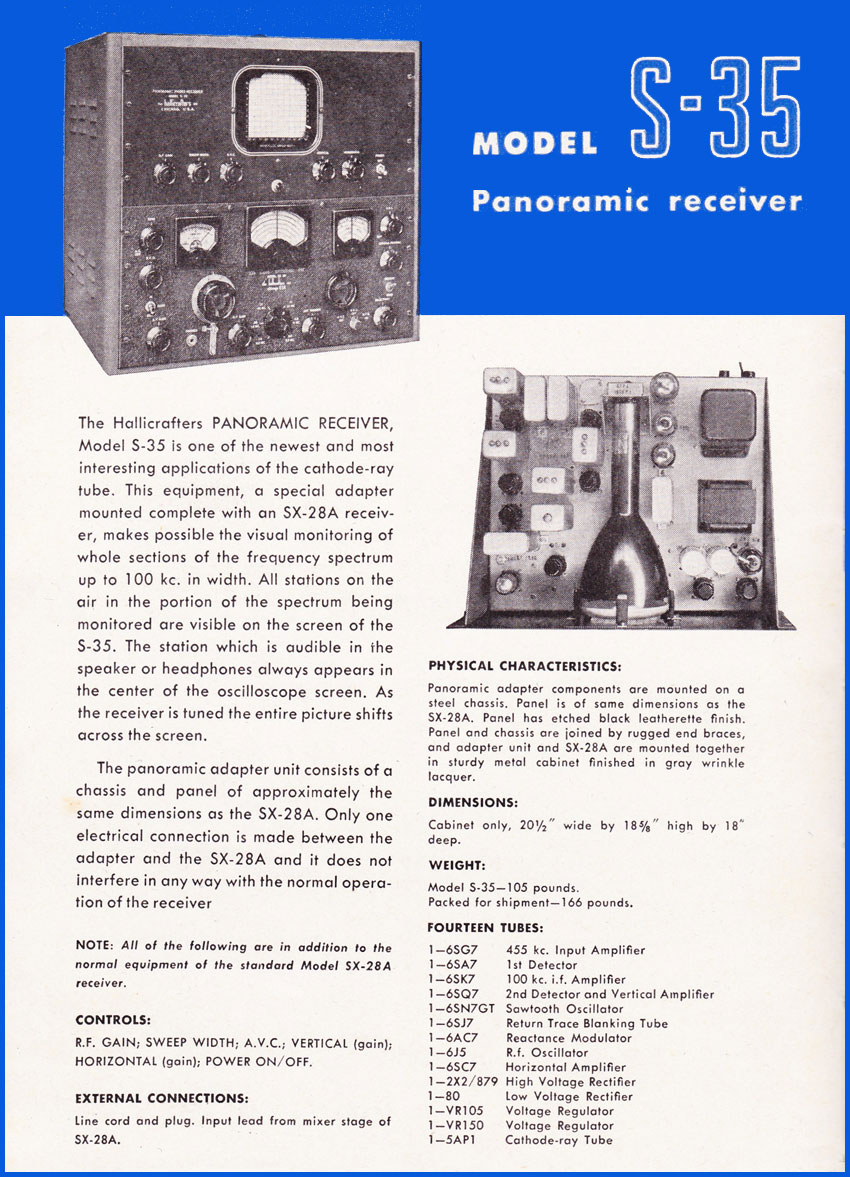
ARRL: The Radio Amateur’s Handbook, 1946
Suggestions?
If you have suggestions on how to make the NZ Net better, or things you’d like to see covered in these updates, please contact ZL1NZ. You might even like to write something for the newsletter.
Thanks for reading, and I hope to hear you soon on the NZ Net!
—
Neil Sanderson ZL1NZ, Net Manager
New Zealand Net (NZ NET)
7030 kHz at 9pm NZT Daily


